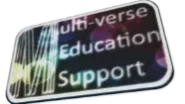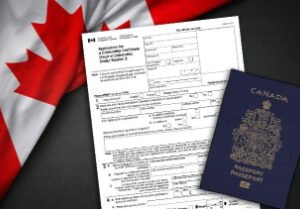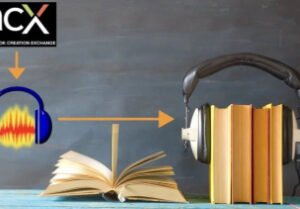A+ Essays: A Structured Approach to Successful Essay Writing
- Description
- Curriculum
- FAQ
- Reviews
Many students become anxious at the prospect of having to write an essay or term paper. They don’t understand the conventions for organizing essays, and they don’t know how to manage their time and the writing process.
The result is that many students enter college without the skills necessary to succeed simply because they were never properly taught how to write essays.
This course aims to overcome this problem by offering a systematic framework for essay writing that removes the mystery and presents a clear path for moving from idea to outline to completed first draft.
A STRUCTURED APPROACH TO SUCCESSFUL ESSAY WRITING
The most efficient way to improve your essay writing is to focus on the key structural features that define successful writing at the essay level. An essay can be written beautifully, but if it’s missing key structural elements (like a well defined thesis statement), it will fail as an essay.
This course provides a set of concepts and tools for thinking about, analyzing and fixing problems with the structural elements of your essay.
CONTENTS AND OVERVIEW
Students in this course will learn how essay writing skills are related to “deep reading” and “deep thinking” skills, and why this is increasingly important in today’s world. You will also learn how standards of good essay writing are related to standards of good written communication more broadly. You’ll learn why academic essays are structured the way they are, how essay style is related to essay structure, how to approach the writing process, and how to organize your time so that you can actually get the work done before the deadline.
But the centerpiece of the course is two detailed case studies. In one of them I take a short student essay that has some serious problems, analyze the structural issues and rewrite that essay from start to finish.
In another case study I take an actual essay assignment from an actual college class, that I don’t teach, and take that essay from initial brainstorming and researching to a detailed outline to a completed first draft with a reference list and inline reference citations.
At the end of this course you will feel more confident about your ability to successfully complete essay assignments in school, and you will have a greater understanding of the skills and habits of successful writers.
NOTE: ACADEMIC INSTITUTIONS LOVE THIS CONTENT
I have a lot of positive feedback about this content over the years. College and universities from around the world have paid me thousands of dollars to license the use of these videos on their institutional servers (libraries, academic integrity programs, etc.).
Here are some of the institutions that have purchased copies of these videos for use on their own institutional servers:
- Michigan State University
- University of South Florida
- Forest Train Academy
- Harvard Kennedy School
- Lawrence High School
- Wayland Public Schools
- Wentville School District
… among others.
But I would like to share this content with as wide an audience as possible, and Udemy is a fabulous platform for hosting it.
-
5IntroductionVideo lesson
-
6The Craft of Writing from 20,000 FeetVideo lesson
-
7The Most Efficient Way to Dramatically Improve Your Essay WritingVideo lesson
There are a lot of factors that go into good writing -- spelling, vocabulary, grammar, sentence structure, usage, paragraph structure, and so on -- but good ESSAY writing hinges on a few key factors. This lecture explains what these are.
-
8Introduction, Main Body, Conclusion: Why Are Essays Written This Way?Video lesson
-
9How Essay Style is Related to Essay StructureVideo lesson
-
24IntroductionVideo lesson
-
25Writing a Real College Essay - Part 1 - The AssignmentVideo lesson
-
26Writing a Real College Essay - Part 2 - Initial ResearchVideo lesson
-
27Writing a Real College Essay - Part 3 - OutliningVideo lesson
-
28Writing a Real College Essay - Part 4 - DraftsVideo lesson
-
29Writing a Real College Essay - Part 5 - References and CitationsVideo lesson
-
30IntroductionVideo lesson
-
31The #1 Misconception About Writing StyleVideo lesson
-
32Oratorical Style, Prophetic Style and Romantic StyleVideo lesson
-
33Practical Style, Reflexive Style and Academic StyleVideo lesson
-
34Classic Style: Prose as a Window Into the WorldVideo lesson
-
35Classic Style as an Antidote to Bad WritingVideo lesson
-
36Preliminary CommentsVideo lesson
-
37A Note About URLs in the Videos in This SectionText lesson
-
38IntroductionVideo lesson
-
39The Minimal Five-Part Structure of a Good Argumentative EssayVideo lesson
-
40Writing the IntroductionVideo lesson
-
41Writing the ConclusionVideo lesson
-
42The Essay: "Should Teachers Be Allowed to Ban Laptops in Classrooms?"Video lesson
-
43Analysis: The IntroductionVideo lesson
-
44Analysis: First ArgumentVideo lesson
-
45Analysis: Second ArgumentVideo lesson
-
46Analysis: Third ArgumentVideo lesson
-
47Analysis of the Main Body: Evaluation and RecommendationsVideo lesson
-
48Analysis: The ConclusionVideo lesson
-
49The Essay: An Improved VersionVideo lesson
-
50The Essay: An Improved Version with CommentaryVideo lesson
-
51Preliminary CommentsVideo lesson
-
52IntroductionVideo lesson
-
53What is Plagiarism?Video lesson
-
54Downloading and Buying Whole PapersVideo lesson
-
55Cutting and Pasting From Several SourcesVideo lesson
-
56Changing Some Words But Copying Whole PhrasesVideo lesson
-
57Paraphrasing Without AttributionVideo lesson
-
58The Debate Over PatchwritingVideo lesson
-
59IntroductionVideo lesson
-
60When Should I Cite a Source?Video lesson
-
61What Needs To Be Cited?Video lesson
-
62How to Cite: Mark the BoundariesVideo lesson
-
63Citing Exact WordsVideo lesson
-
64Citing a Longer QuotationVideo lesson
-
65Citing a Source But Not QuotingVideo lesson
-
66Do I Have to Cite Information That is "Common Knowledge"?Video lesson
-
67Citation Styles: MLA, APA, Chicago, Turabian, oh my!Video lesson









